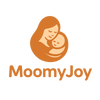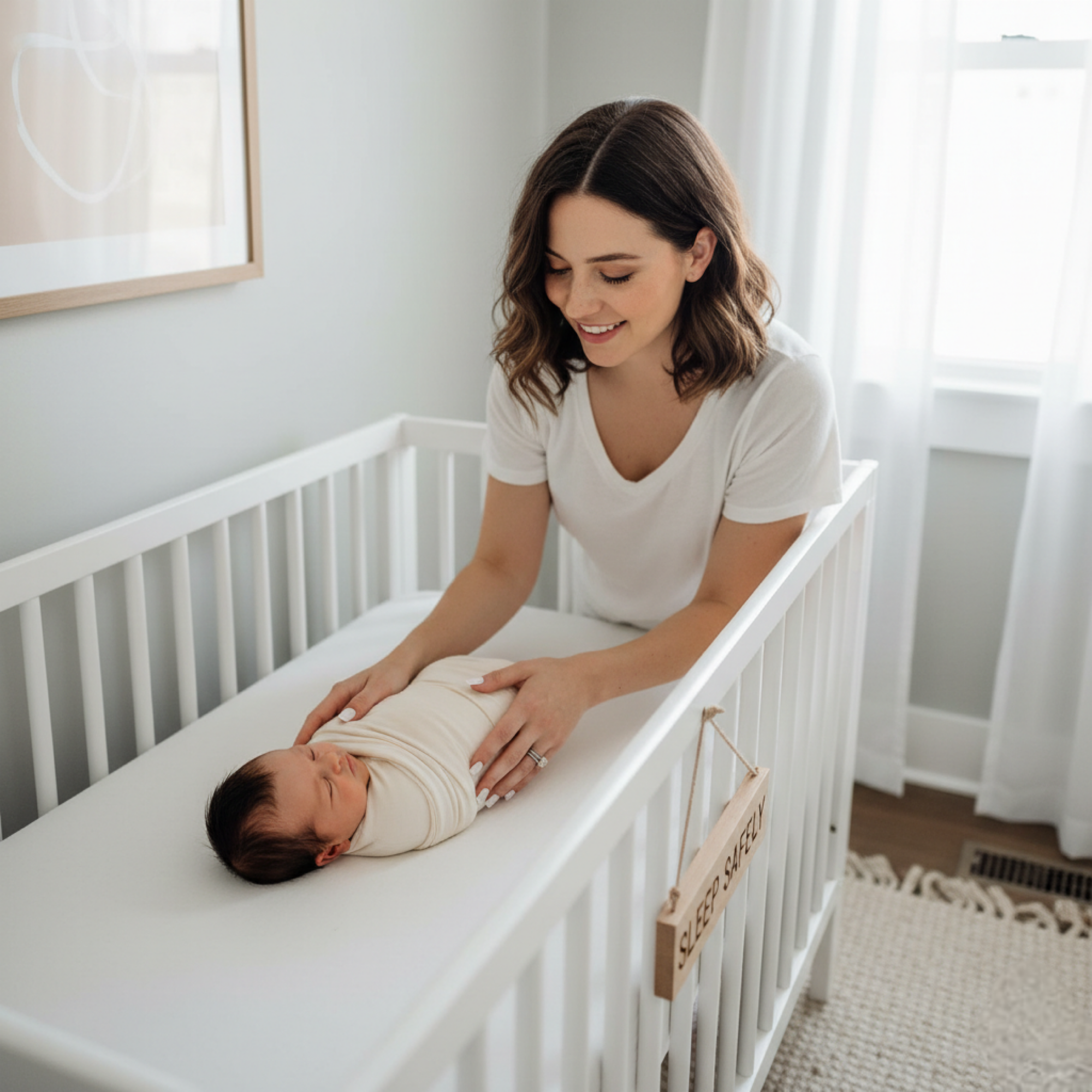As a new parent, ensuring your baby’s safety while they sleep is one of the most important considerations you’ll have. A good night’s sleep is essential for both your baby’s development and your peace of mind, but it comes with its own set of guidelines to ensure that your little one stays safe. The way your baby sleeps can have significant effects on their health and well-being, which is why it’s crucial to be aware of the safest sleeping positions. This guide will cover everything you need to know about safe baby sleeping positions, along with practical baby sleep tips to help your baby sleep soundly while minimizing any risks.

Understanding the Importance of Safe Sleeping
Before diving into specific sleeping positions, it’s essential to understand why safe baby sleep matters. According to pediatric experts, the first year of a baby’s life is crucial for their development. Babies sleep for a significant portion of the day, and the quality and safety of that sleep can affect their growth, physical development, and cognitive skills.
The most significant concern with baby sleeping positions is Sudden Infant Death Syndrome (SIDS), which refers to the sudden, unexplained death of an infant younger than one year old during sleep. SIDS is more likely to occur when babies sleep in unsafe positions or environments. Fortunately, by following safe sleeping guidelines, you can dramatically reduce the risk of SIDS and other sleep-related accidents.

The Best Baby Sleeping Position: Back is Best
One of the most fundamental and well-researched guidelines for safe baby sleeping positions is the “back is best” rule. The American Academy of Pediatrics (AAP) recommends that babies should always be placed on their backs to sleep, both for naps and overnight sleep. This position has been extensively studied and proven to reduce the risk of SIDS by as much as 50%.
When babies are placed on their stomachs or sides to sleep, they are at higher risk for suffocation or difficulty breathing. The back sleeping position allows for clear airways, reducing the likelihood of a blocked nose or airway obstruction, which can be fatal. Therefore, placing your baby on their back is the safest sleeping position, regardless of whether they sleep in a crib, bassinet, or co-sleeper.

Why Tummy Time is Important for Your Baby’s Development
While it’s essential to place your baby on their back to sleep, tummy time is an equally important activity for their development when they are awake. Tummy time helps strengthen your baby’s neck, back, and shoulder muscles, which are crucial for milestones like rolling over, sitting up, and crawling.
Newborns should start tummy time as soon as they are awake, for short periods, and gradually increase the time as they get older. Make sure to supervise your baby during tummy time to ensure their safety. Never let your baby sleep on their stomach during the first year, as this increases the risk of suffocation and SIDS.

The Role of Sleep Environment in Baby’s Safety
Creating a safe sleep environment is just as important as the position your baby sleeps in. The sleep environment should be free from any potential hazards that could harm your baby. Here’s how to ensure that your baby’s sleep environment is safe:
-
Firm Mattress: Always place your baby on a firm mattress that fits snugly in the crib, bassinet, or co-sleeper. Soft bedding, such as pillows, blankets, and bumper pads, should be avoided as they increase the risk of suffocation.
-
No Loose Bedding or Soft Toys: Keep the crib free of stuffed animals, pillows, or heavy blankets that could cover your baby’s face and obstruct breathing.
-
Sleep on a Flat Surface: Never place your baby to sleep on a soft surface, such as a couch, armchair, or soft mattress. A flat, firm surface is safest.
-
Use a Sleep Sack or Swaddle: Instead of blankets, use a sleep sack or swaddle to keep your baby warm. Make sure that it’s snug around the chest but loose around the hips to avoid restricting their movements.
-
Avoid Co-Sleeping in Bed: While co-sleeping can feel like a natural choice, it comes with certain risks, especially if the baby falls between the mattress and wall or if there is a risk of rolling over onto the baby. It’s safer to place your baby in their own crib or bassinet next to your bed.

The Side Sleeping Myth: Avoid This Position
Many parents believe that placing their baby on their side is a safe middle ground between back sleeping and stomach sleeping. However, side sleeping is not recommended as a safe baby sleeping position. Babies who sleep on their sides may accidentally roll onto their stomachs during sleep, putting them at higher risk for suffocation and SIDS.
Even if your baby initially settles on their side, it is much safer to start with the back position. Babies who sleep on their sides are also more likely to experience issues with temperature regulation, which can increase the risk of overheating.

The Importance of Keeping Baby’s Head Uncovered
Overheating is another factor that can increase the risk of SIDS. It’s important to dress your baby appropriately for the room temperature, making sure that they aren’t too hot or too cold. The safest way to monitor your baby’s temperature is to feel their neck or back to see if they feel too warm or too cold.
Avoid covering your baby’s head with a hat or blanket while they are sleeping. Babies have a limited ability to regulate their body temperature, and covering their head can increase the risk of overheating. Instead, dress your baby in lightweight, breathable layers, and use a sleep sack to keep them warm.

Sleep Tips for Newborns and Infants
Newborns and infants have different sleep needs than older babies. Their sleep cycles are shorter, and they spend more time in REM sleep, which is lighter sleep. Here are some baby sleep tips specifically for newborns and younger infants:
-
Establish a Consistent Sleep Routine: While newborns won’t follow a strict schedule, establishing a bedtime routine can help them feel secure and ready to sleep. This can include things like a warm bath, gentle rocking, or soft lullabies.
-
Feed Your Baby Before Bed: Babies often sleep better when they are well-fed. Make sure to feed your baby before putting them down to sleep, so they are less likely to wake up due to hunger.
-
Create a Calm and Quiet Sleep Space: Bright lights, loud noises, or excessive stimulation can interfere with your baby’s ability to sleep. Keep the room dark and quiet, or use a white noise machine to block out any disruptive sounds.
-
Don’t Let Your Baby Sleep Too Much During the Day: While babies need a lot of sleep, excessive napping during the day can affect their nighttime sleep. Try to maintain a balance between daytime naps and nighttime sleep.
-
Keep Nighttime Feedings Low-Key: When your baby wakes up at night for feedings, keep the environment calm and dimly lit. Avoid stimulating activities like talking or playing, as this can make it harder for your baby to settle back to sleep.

When Should Babies Start Sleeping Through the Night?
As your baby grows, they will begin to develop more regular sleep patterns. Most babies are capable of sleeping for longer stretches at night by the time they are 3-6 months old. However, every baby is different, and some may take longer to develop this ability.
It’s important to remember that sleep regression can occur during different phases of your baby’s development. During these times, your baby may wake more frequently during the night, which is completely normal. Patience and consistency are key.
Signs of Safe Sleep: When to Seek Help
As parents, it’s important to stay vigilant about your baby’s sleep safety. If you ever feel unsure about your baby’s sleep environment or notice any signs of distress, don’t hesitate to consult a pediatrician. Some red flags to watch for include:
-
If your baby is frequently sweating or feels hot to the touch while sleeping.
-
If your baby shows signs of discomfort, such as grunting, crying, or difficulty breathing during sleep.
-
If you’re unsure about the position your baby is sleeping in, especially if they are not consistently placed on their back to sleep.
By monitoring these signs and being proactive in following safe sleep guidelines, you can ensure that your baby enjoys healthy, safe sleep.

Final Thoughts on Safe Baby Sleeping Positions
In conclusion, safe baby sleeping positions are fundamental to reducing the risk of SIDS and ensuring that your baby sleeps soundly and safely. The key is placing your baby on their back to sleep, keeping their sleep environment free from hazards, and monitoring their temperature to avoid overheating.
By adhering to these guidelines, and with a few helpful baby sleep tips, you can foster healthy sleep habits for your baby while giving yourself peace of mind. Safe sleeping isn’t just about the position; it’s about creating an environment where your baby feels secure, comfortable, and able to rest. Your baby’s sleep safety is essential, and by following these guidelines, you’ll help your little one sleep better and stay safer.



0 comments